A preliminary permit application has been filed for a new five-story apartment complex at 4655 Steele Street in Oakland’s Redwood Heights neighborhood. The property was occupied by the temporarily closed Oakland Public School Diagnostic Center and is owned by the Oakland Unified School District. If built, the site would be transformed with over four dozen affordable workforce homes, retail, and community space.
Initial plans provide a basic glimpse at the project facts. The five-story structure will create four floors of housing above 1,300 square feet of retail and parking. An application writes that there will be 56 apartments, with units ranging from 24 one-bedrooms, 24 two-bedrooms, and eight three-bedrooms. One of the two-bedroom residences will be set aside for the on-site property manager.
The property is located along Steel Street, abutting the Urban Montessori Charter School, and near I-580 freeway. Across the freeway is the Mills College at Northeastern University campus, the historic 171-year-old Mills College campus that, after several years of financial trouble, merged with Northeastern University in 2022.
Turner Development Resource Group is responsible for the application. The estimated timeline and cost for construction have yet to be established. The development team hopes to use Senate Bill 35 to expedite ministerial approval.
Subscribe to YIMBY’s daily e-mail
Follow YIMBYgram for real-time photo updates
Like YIMBY on Facebook
Follow YIMBY’s Twitter for the latest in YIMBYnews

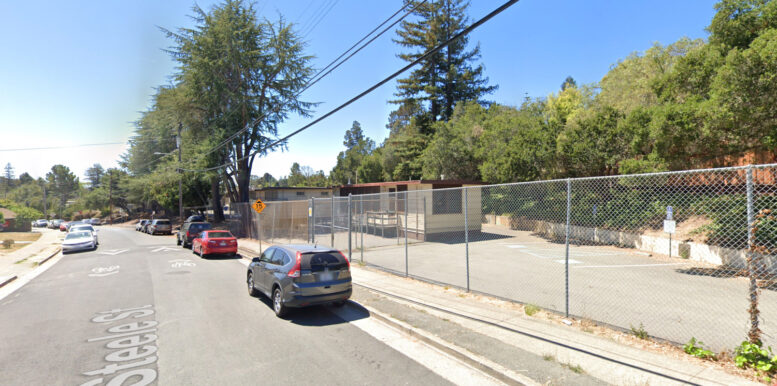
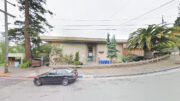
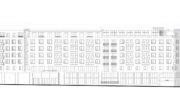
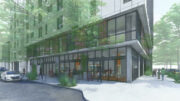
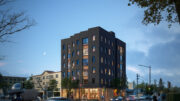
What exactly is a “workforce home”? Homes for people who work? So…a normal home? Last I checked, most homeowners, and renters, are a part of the workforce. You know, so they can pay for their home, among other things. Most homes, throughout the history of homes, are “workforce homes”. All this marketing language is getting out of hand lol.
most workers not earning $300k do have trouble affording market housing though.
but yeah, marketing language. Nobody likes the term affordable housing or (gasp) low income housing.
but you know this🤪
There are so many NIMBYs who do nothing other than extract $100K/yr out of their homes that they bought early enough (or their parents bought), that they don’t work. Prop 13 also helps them. They are hence a landed gentry.
Hence, the term ‘workforce home’.
Having a landed gentry is very un-American. The fact that this term ‘workforce home’ is now official reveals how much of a landed gentry there is.
“Ideally,” workforce housing is marketed to individuals/families with wages closer to the minimum wage spectrum. A good couple of decades ago, someone making minimum wage used to be able to afford a living. It wasn’t a lavish lifestyle, but you could afford a roof overhead and eat. It is not ideal for multiple-kid households, but one has the flexibility.
Today, our essential workers can no longer live near their workplaces. No matter what, we still need those hourly jobs that help make the world spin, but due to simply what the work is, people will never pay for these jobs at the same level as tech, marketing, engineers, etc.
It makes sense why, but having to commute over an hour for a job that hasn’t gotten that much more desirable regarding pay, the quality of life is collapsing, and it’s evident no one wants to fill these positions.
People that b*tch about no one wanting to work don’t realize people literally can’t survive on those low-paying jobs, and they look for better. The cost of living doesn’t pencil out, and the commutes suck more money than the job makes.
In the end, you have workforce housing that’s catered to lower-income earners. It’s a complicated conversation to justify. You should be able to afford a living on a full-time minimum-wage job. If you are willing to accept what comes with the lifestyle, then that life should be attainable. But then there’s the aspect of working and wanting to live in high-desirable areas. If you can’t afford to live where the cost of living is severely expensive, it makes sense to move somewhere where you can make the numbers work. But here you are, stuck in this affordability paradox. Solutions: create mixed-income housing, raise the minimum wage, help society accept not everyone was built to be a CEO, continue to expand social/public housing, have commutes continue to push families farther and farther from urban centers, or be happy with an endless supply of homeless individuals.
“Landed Gentry” implies someone who doesn’t have to work. Far from it. Say you have a mortgage-free home, condo, whatever. You still need to pay taxes, insurance and in some cases, HOA fees. These “lucky” people can work a regular job and, with careful money management, keep their home and have the privilege of being called “Landed Gentry”.
Why do all these apartment builds have to have retail space? Don’t we have enough empty retail space already?
Actually, this is a very efficient consolidation of retail space that facilitates faster removal of the old, derelict, wasteful strip malls. In other words, including retail in a building speeds up the availability of new land for more housing.
I had the same question. I live in a home. I have a job, so I guess that makes me part of the workforce. So is my home a “workforce home”?
What a waste!Why not fix up all these old vacant buildings warehouse’s etc that are currently throughout Oakland making them livable livable
“Workforce housing,” affordable housing,” permanent supportive housing” all are names for subsidized housing. Those built over the last decade typically are so cheaply constructed that you can spot them from a distance. They don’t age well – the developments are sterile, generic, boxy, and undifferentiated. These are the new housing projects.
In this particular case, workforce housing is meant literally—the school district owns this property and is developing it as housing for their teachers and staff. (Cost of living in the Bay Area is one of the top challenges for teachers.)
Alas, workforce housing was naturally built across CA from 1800s-1960s. In the ’70s developers focused on highest incomes only and created inefficient surbaban sprawl. The NIMBYism created regs (which Weiner and others have pushed back) made CA housing scarce, and ultra expensive. Wages are compressed by billionaires and civil servants are now “low income”. Social housing serving 80-180AMI is badly needed and must be subsidized by at least using public land to serve highest and best public use. It also reduces smog, green house games and cuts travel commute for all.
Americans use 600% more energy than Europeans because of our housing mis-planning favoring the wealthy or inherited lucky and this is the answer. IMHO
“Workforce housing” is a term developers have been using for housing that might be priced a bit below market, but is not “affordable housing” for people who qualify as “lower income”. Think housing targeted to folks in the $75,000 – $150,000 /year income range, if not higher. (By comparison, half of Oakland’s renter households have incomes less than $55,000/year). In most cases it has little or no public subsidy, since more housing funding is reserved for lower incomes.
Someone commented that this is housing specifically for teachers and other school district employees – do we know that for a fact? That would at least be filling a need that makes it harder to attract new teachers.